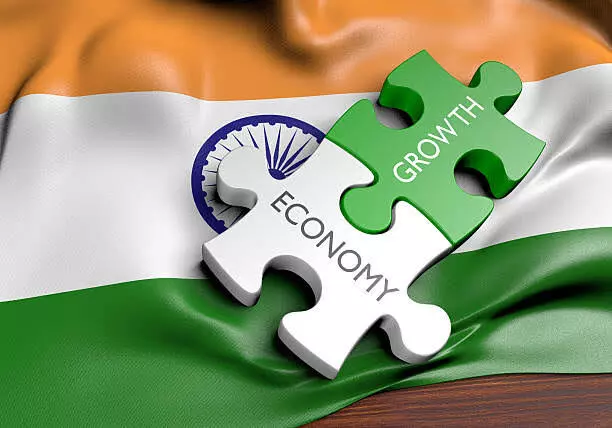ADB lowers India’s FY26 growth forecast to 6.5% on trade, tariff concerns

New Delhi: The Asian Development Bank (ADB) on Wednesday lowered India's growth forecast for FY26 to 6.5 per cent from 6.7 per cent on account of trade uncertainty and higher US tariffs that are expected to impact exports and investment. Despite the downward revision from the April 2025 Asian Development Outlook (ADO), India remains one of the fastest-growing major economies in the world. "This revision is primarily due to the impact of US baseline tariffs and associated policy uncertainty. In addition to the effects of lower global growth and the direct impact of additional US tariffs on Indian exports, heightened policy uncertainty may affect investment flows," the July ADO said.
Despite this, economic activity remains robust, with domestic consumption set to grow strongly on the back of revival of rural demand, it said. Services and agriculture sectors are expected to be key drivers of growth, the latter supported by a forecast of above-normal monsoon rains, it added. The Economic Survey has projected the GDP growth for FY26 between 6.3 per cent and 6.8 per cent, while RBI lowered its growth forecast from an earlier level of 6.7 per cent to 6.5 per cent for the ongoing financial year. India's economy grew by 6.5 per cent in the FY25, marking its slowest pace in four years. This growth was the slowest in four years and compared to a 9.2 per cent expansion in the previous 2023-24 fiscal. According to the report, the central government's fiscal position remains strong, with higher-than-expected dividends from the Reserve Bank of India, and it is on track to meet the targeted reduction in its fiscal deficit. In FY27, growth is projected to improve to 6.7 per cent on account of rising investments, under the assumption of reduced policy uncertainty and favourable financial conditions, backed by recent reductions in the repo rate and the cash reserve ratio by the monetary authorities, the report said. With inflation on a downward trend, the RBI's Monetary Policy Committee (MPC) has been reducing the benchmark repo rate and has adopted a neutral stance, which also gives the flexibility to either cut or hike the rate going forward. The central bank has cumulatively reduced the repo rate by 100 basis points since February this year.
Last month, The RBI cut interest rates by more than expected 50 basis points, a third consecutive reduction, and unexpectedly reduced the cash reserve ratio for banks to provide a major liquidity fillip to support the economy amid geopolitical and tariff headwinds. It also cut the cash reserve ratio by 100 basis points to 3 per cent, adding Rs 2.5 lakh crore to already surplus liquidity in the banking system. The baseline expectations of lower crude oil prices will also support economic activity in FY26 and FY27, it added.



